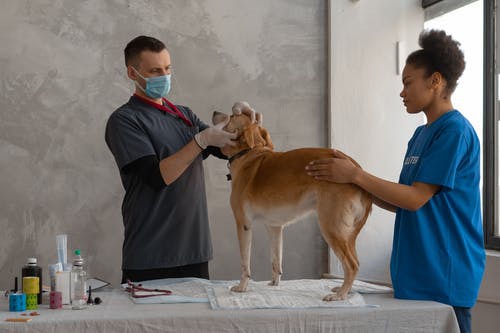Keeping and caring for exotic pets is a fascinating hobby for many. However, this is an aspect of pet ownership that requires a deep understanding of the specialized care these animals need. Whether it’s a reptile, bird, lizard, or even a small mammal like a hedgehog or sugar glider, exotic pets often have unique necessities, unlike your typical dog or cat.
Specialized Care for Exotic Pets
1. Providing the Right Environment
Creating an environment that resembles the natural habitat of your exotic pet is critical. Here are vitally important considerations:
- Temperature and Humidity: Exotic pets usually hail from unique climates, so it’s essential to mimic those conditions in their living environment. For example, reptiles typically need a heat source to help regulate their body temperature, while amphibians require a damp environment.
- Adequate Space: Just like other animals, exotic pets need enough space to thrive. The size of the cage or tank should resemble what the pet would typically inhabit in the wild.
- Special Enclosures: Some exotic pets have specific enclosure requirements. For instance, many birds need cages where they can flutter around freely, while others may prefer smaller, cozier spaces.
2. Veterinary Wellness Exam
Another aspect of specialized care for exotic pets includes a veterinary wellness exam. This is a preventative measure that involves a thorough physical examination of the pet. It allows the vet to assess the pet’s general health and identify any potential issues early. This is especially important for exotic pets, as they often hide their illness, a behavior inherited from their wild ancestors to avoid appearing weak to predators. Check this link to learn more about vet wellness exams.
3. Nutritional Requirements
Exotic pets have unique dietary needs that should be met to ensure their overall health and longevity:
- Carnivorous Pets: Animals like certain reptiles and birds require a high-protein diet made up primarily of meat. An incorrect diet can lead to severe health issues.
- Omnivorous Pets: Pets like some tortoises and various birds that eat both plant and animal-based foods need a diverse diet to get the range of nutrients they need.
- Herbivorous Pets: Certain reptiles, such as iguanas or some small mammals like rabbits, need a plant-based diet and should not be fed meat or dairy products.
Offer a variety of foods to ensure that your exotic pet receives a balanced diet. This includes a mix of proteins, carbohydrates, fats, vitamins, and minerals. Incorporate fresh and high-quality ingredients to mimic the diversity of nutrients they would consume in the wild.
4. Pet Vaccinations
Just like dogs and cats, exotic pets may also require vaccinations to ward off diseases. However, there are various cat vaccination facts and myths that could confuse many pet owners. It is, therefore, essential to consult with a veterinarian specializing in common and exotic pet care to determine the right course of action for preventing diseases in your unique pet.
5. Behavioral Enrichment
- Enrichment Activities: Incorporate a variety of enrichment activities into your exotic pet’s daily routine. This can include puzzle toys, interactive feeders, and objects that encourage exploration and problem-solving. Rotate toys regularly to keep the environment stimulating and prevent boredom.
- Climbing Structures and Hiding Spots: Install climbing structures or create areas where your exotic pet can climb, perch, or hide. This is particularly important for animals like reptiles, birds, or small mammals that naturally engage in climbing or seeking shelter. Ensure that structures are safe and appropriate for your pet’s size and species.
- Foraging Opportunities: Encourage natural foraging behaviors by hiding food or treats within their enclosure. This mimics the experience of hunting or foraging for food in the wild. Use toys or devices that dispense food slowly, promoting mental engagement and physical activity.
- Social Interaction and Playtime: Some exotic pets, especially birds and mammals, benefit greatly from social interaction and playtime with their owners. Spend quality time engaging in activities that cater to their instincts, whether it’s playing with toys, teaching tricks, or simply providing companionship.
- Training Sessions: Many exotic pets can be trained to perform simple commands or tricks. Training not only provides mental stimulation but also strengthens the bond between you and your pet. Use positive reinforcement techniques and be patient, tailoring training methods to suit the individual needs and abilities of your pet.
- Sensory Stimulation: Engage your exotic pet’s senses by introducing different textures, sounds, and scents to their environment. This can be achieved through a variety of means, such as offering different substrates, providing safe items to chew on, or playing soothing sounds.
Whether you’re a proud owner of an exotic pet or a large animal, it’s important to remember that it’s not just about meeting their basic survival needs. Fostering a strong bond with your special pet and giving them a chance to express their natural behavior makes you your partner in exotic animal health. Respect for their unique physiological and psychological needs will ensure that they thrive under your care.
6. Education and Specialized Care
Being an exotic pet owner requires a commitment to continuous learning about the pet’s natural habitat, diet, behavior, and care requirements. Ultimately, with the right knowledge and resources, caring for exotic pets can be an incredibly rewarding experience.
Conclusion
Exotic pets are fascinating creatures that can bring much joy to their human companions. However, their needs must be fully understood and met to ensure their well-being. From the initial veterinary wellness exam to proper diet, habitat, enrichment activities, and regular care, owners must be committed. By doing so, they can ensure their unique pets not only survive but thrive under their care.








